(10 Reasons To Answer) – Why Animals Mate So Fast
- List of examples showing the fast mating behaviour of animals
- REASON I – Predation and Survival
- REASON II – Competition for Mates
- REASON III – Environmental Conditions
- REASON IV – Short Lifespans
- REASON V – Life History Strategies
- REASON VI – Preserving Genetic Diversity
- REASON VII – Maximizing Reproductive Opportunities
- REASON VIII – Reducing Exposure to Disease
- REASON IX – Ensuring Fertilization
- REASON X – Optimizing Energy Expenditure
Animals mate quickly as an adaptive response to ecological challenges, including predation, mate competition, environmental conditions, and their specific life history strategies. This rapid mating behavior ensures the survival and propagation of their genetic lineage in dynamic and competitive natural environments.
Due to a variety of evolutionary and ecological factors, animals have a proclivity to mate quickly. This is primarily due to their survival and reproduction strategies.
It’s important to note that the speed of mating behaviors varies significantly across different species and can be influenced by factors such as ecological niche, reproductive strategy, and environmental conditions. Ultimately, the quickness of animal mating is a product of evolutionary pressures that optimize reproductive success in a given context.
In the context, I will provide a formal explanation of why animals engage in fast mating:
- Predation and Survival: Many animals are prey to predators, posing a constant threat to their survival. Rapid mating allows them to pass on genetic material before becoming prey to predators. This strategy ensures the survival of their species even in high-predation environments.
- Competition for Mates: There is fierce competition among individuals of the same sex to secure mating opportunities in many species. Fast mating can be advantageous because it allows a person to secure a mate before competitors, ensuring successful reproduction.
- Environmental Conditions: Seasonal changes, for example, can have a significant impact on the availability of resources and suitable mates. Animals frequently engage in rapid mating during periods of favourable conditions to maximise their chances of reproduction.
- Short Lifespans: Some species have relatively short lifespans, so mating quickly is critical to ensuring the genetic lineage’s survival. Delaying mating in such cases may result in missed reproductive opportunities.
- Life History Strategies: Different species have evolved different life histories that influence their reproductive behaviour. Some animals have a “r-selected” strategy, which involves rapid reproduction and mating, whereas others have a “K-selected” strategy, which involves slower reproduction and more parental care. The decision between these strategies is influenced by ecological and evolutionary pressures.
- Preserving Genetic Diversity: Rapid mating can lead to multiple matings with different partners, increasing genetic diversity within a population. This diversity can be advantageous for the survival of the species in changing environments.
- Maximizing Reproductive Opportunities: In environments with unpredictable conditions, individuals may need to seize mating opportunities quickly when they arise. This increases the likelihood of reproducing even in challenging circumstances.
- Reducing Exposure to Disease: Lengthy mating rituals or behaviors may increase the risk of transmitting diseases or parasites between individuals. Quick mating minimizes the duration of close contact, reducing disease transmission.
- Ensuring Fertilization: Some animals employ “sperm competition” strategies, where multiple males mate with a single female. Quick mating by males ensures that their sperm has a higher chance of reaching the female’s eggs first, increasing their chances of fertilization.
- Optimizing Energy Expenditure: Long courtship or mating rituals can be energetically costly. Quick mating reduces the energy expenditure required for reproduction, allowing animals to allocate resources to other essential activities such as foraging or avoiding predators.
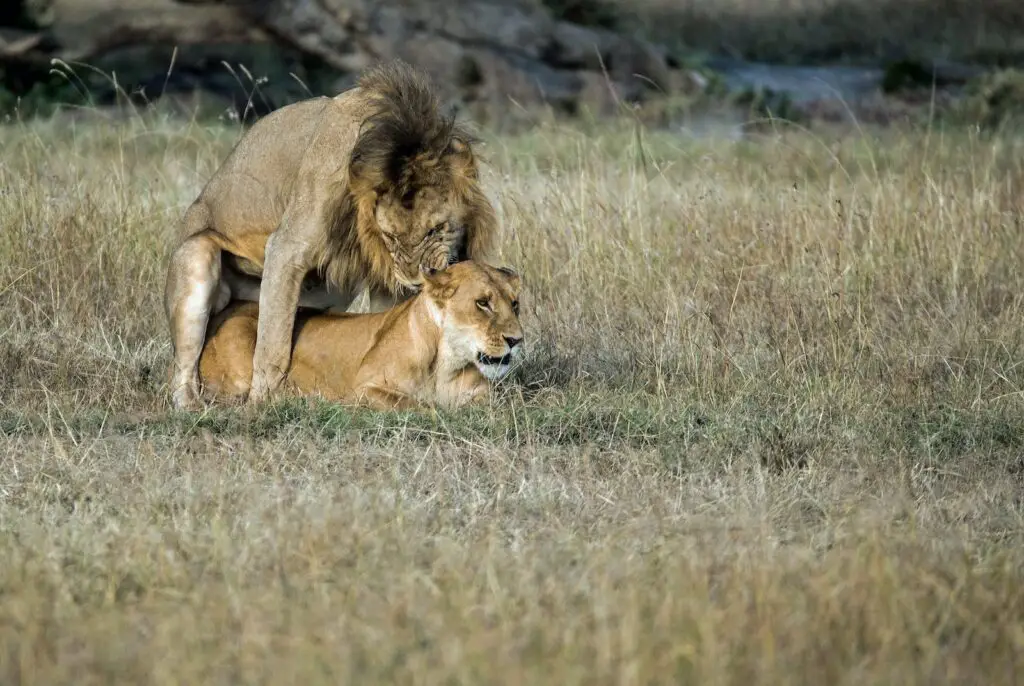
List of examples showing the fast mating behaviour of animals
Certainly, here is a list of examples showcasing fast mating behavior in various animal species. These examples illustrate the diverse ways in which animals employ fast mating strategies to optimize their reproductive success in various ecological contexts and life histories.
- Mayflies: Mayflies are well-known for their incredibly short adult lifespan, which typically lasts only a few hours to a few days. During this brief period, they engage in rapid mating swarms, where males form large groups to attract females for quick reproduction.
- Pacific Salmon: Salmon, such as the Pacific salmon species, undertake epic migrations to spawn in their natal streams. Once they reach their spawning grounds, they engage in fast mating, with females laying eggs and males fertilizing them before they die shortly after.
- Fireflies: Fireflies use bioluminescent signals to attract potential mates. Their mating rituals are rapid and visually spectacular, with males emitting synchronized flashes to communicate their availability to females.
- Honeybees: In honeybee colonies, the mating behavior is swift. Young queen bees undertake a single, high-speed mating flight where they mate with multiple males (drones). Afterward, they return to the hive, where they store the collected sperm to fertilize eggs throughout their lifetime.
- Cicadas: Periodical cicadas, known for their long underground juvenile stage, emerge as adults in large numbers and engage in fast mating. Males produce loud mating calls to attract females for quick reproductive encounters.
- Praying Mantises: Female praying mantises are notorious for their cannibalistic mating behavior, where they may consume the male after mating. This pressure can lead to fast mating attempts by males to minimize the risk of predation.
- Barnacles: Barnacles are sessile crustaceans that release their reproductive organs into the water to facilitate external fertilization. This method allows them to mate quickly and efficiently as their sedentary lifestyle limits their mobility.
- Zebra Finches: Zebra finches, a type of songbird, are known for their rapid courtship and mating rituals. They engage in complex songs and displays before swiftly mating, often as part of monogamous pairs.
- Leopard Frogs: Male leopard frogs produce distinctive calls to attract females during the breeding season. Once a female approaches, mating occurs quickly in water bodies like ponds and wetlands.
- Bluehead Wrasses: In coral reef ecosystems, bluehead wrasses exhibit protogynous hermaphroditism, where they change from female to male. Males engage in fast mating with multiple females in their territories to maintain social order.
REASON I – Predation and Survival
Predation and survival are indeed significant factors influencing why animals often engage in fast mating behaviors. The need to minimize predation risk and enhance survival plays a crucial role in shaping the evolutionary strategies of many species when it comes to mating. Here’s an elaboration on why predation and survival are intertwined with quick mating:
- Minimizing Exposure to Predators: Mating can make animals vulnerable to predation, as it often involves conspicuous and energetically costly behaviors. Prolonged courtship or mating rituals can draw the attention of predators, increasing the risk of being attacked or consumed. By mating quickly, animals reduce the time spent engaged in these vulnerable activities.
- Avoiding Interruption: In environments where competition for mates is fierce, there’s a higher likelihood of interference from competing individuals. Quick mating reduces the chances of interruption by rival suitors, ensuring that an individual can successfully reproduce without being ousted by a competitor.
- Maximizing Reproductive Success: Survival of an individual’s genetic lineage depends on successful reproduction. Quick mating increases the chances of successfully passing on genes to the next generation. In situations where predation is a constant threat, individuals that mate quickly are more likely to reproduce before falling victim to a predator, thus ensuring the survival of their genetic legacy.
- Energy Conservation: Lengthy courtship or mating rituals can be energetically demanding. Animals facing the constant risk of predation need to allocate their energy efficiently to various survival-related activities, such as foraging and evading predators. Quick mating conserves energy that can be used for these essential tasks, enhancing overall survival prospects.
- Adaptation to Predatory Environments: Some species have evolved specific adaptations to reduce the predation risk associated with mating. For example, certain amphibians have evolved synchronized, rapid mating behaviors that minimize the time spent near water, where they are susceptible to aquatic predators. Such adaptations highlight the strong selection pressure exerted by predation on mating strategies.
REASON II – Competition for Mates
The competition for mates is a significant driving force behind why animals mate quickly. This phenomenon is deeply rooted in the principles of evolutionary biology and can be explained in more detail as follows:
- Limited Reproductive Opportunities: In many animal species, the opportunities for reproduction are limited. Females of these species are often receptive to mating for only a short period, known as their “estrus” or “reproductive window.” During this time, males must compete to secure a mating partner before this window closes. This limited timeframe creates intense competition among males.
- Sexual Selection: Charles Darwin introduced the concept of sexual selection, which explains how certain traits or behaviors that enhance an individual’s ability to secure a mate will be favored by natural selection. Quick mating behaviors can be advantageous because they increase the chances of a male successfully copulating with a female during her receptive period. Males that can secure mates quickly are more likely to pass on their genes to the next generation.
- Preventing Mate “Stealing”: In species where multiple males may be interested in the same female, quick mating can prevent other males from “stealing” the opportunity to mate. By being swift in their courtship and copulation, males reduce the chances of rivals intervening and mating with the female.
- Ensuring Paternity: For males, ensuring paternity is a crucial concern. Quick mating behaviors can help ensure that a male’s sperm is the first to reach the female’s eggs, increasing the likelihood that his genetic material will be used for fertilization. This is particularly relevant in species where multiple males may mate with the same female in a short time frame.
- Energy Conservation: Lengthy courtship or mating rituals can be energetically demanding. Quick mating conserves energy that can be allocated to other essential activities such as foraging or defending territory. This efficient use of resources enhances an individual’s overall fitness.
- Adaptation to Specific Environments: In certain environments, such as those with high predation pressure or resource scarcity, quick mating may be favored as a survival strategy. Minimizing the time spent in a vulnerable state during mating reduces the risk of being preyed upon or losing access to limited resources.
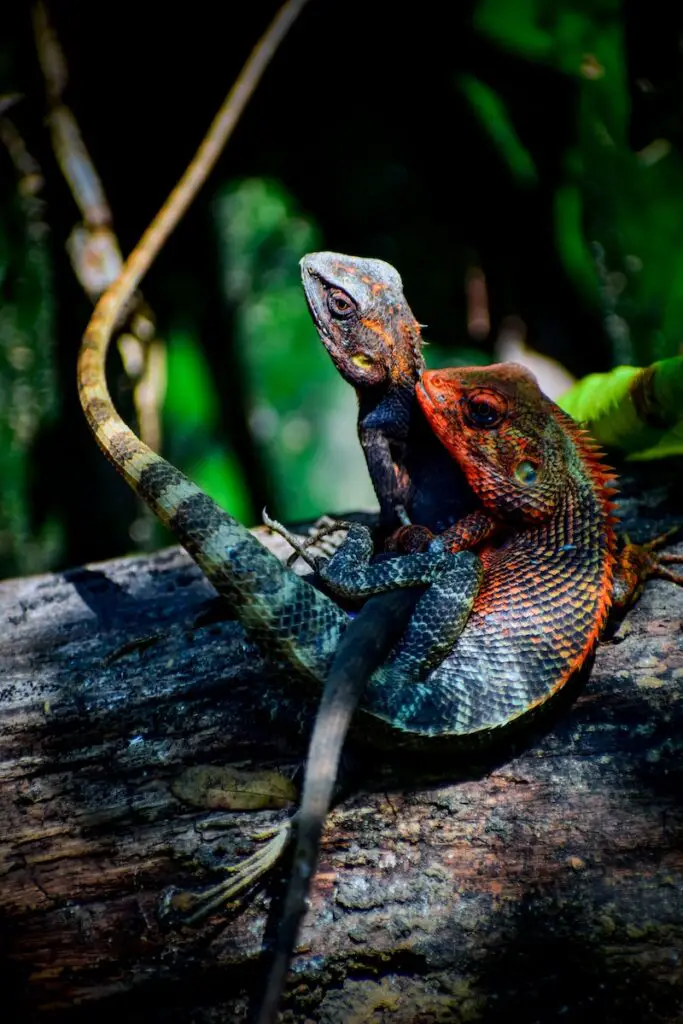
REASON III – Environmental Conditions
Environmental conditions play a significant role in influencing the speed of animal mating behaviors. The primary reason for quick mating in response to environmental conditions is to maximize reproductive success in dynamic and often challenging ecosystems. Here’s a more detailed explanation of how environmental conditions drive the rapidity of animal mating:
- Resource Availability: In many ecosystems, essential resources such as food and water can be scarce and unpredictable. Animals must prioritize their energy allocation to acquire these resources. Quick mating allows them to devote more time and energy to foraging and resource acquisition, ensuring their own survival and the survival of potential offspring.
- Predator-Prey Dynamics: Many animals are part of predator-prey relationships where both predators and prey need to be constantly vigilant. Prolonged mating rituals can make individuals vulnerable to predation. Quick mating reduces the time spent in a compromised state, increasing the chances of survival for both mates.
- Seasonal Variation: Environmental conditions often vary seasonally, impacting the availability of mates and resources. In seasonal environments, animals have a limited window of opportunity to reproduce successfully. Quick mating ensures that they can seize these limited chances to reproduce during optimal conditions.
- Climate and Weather: Extreme weather conditions, such as harsh winters or scorching summers, can make it challenging for animals to engage in prolonged courtship or mating behaviors. Quick mating allows individuals to reproduce efficiently without being overly exposed to adverse weather conditions.
- Disease and Parasite Pressure: Environments may harbor pathogens and parasites that can infect animals during close contact, such as mating. Quick mating behaviors minimize the duration of contact between individuals, reducing the risk of disease transmission.
- Population Density: In environments with high population densities, competition for mates can be intense. Quick mating strategies can be advantageous in such situations, as they increase the chances of an individual successfully reproducing before competitors interfere.
- Resource Competition: Apart from food and water, animals may also compete for nesting sites, shelter, and other resources crucial for raising offspring. Quick mating allows individuals to secure these resources promptly and ensure the survival of their young.
- Genetic Diversity: Some environments may undergo rapid changes, such as shifts in temperature or the emergence of new predators. Quick mating strategies, which lead to multiple matings with different partners, can enhance genetic diversity within a population. This diversity can increase the likelihood that some individuals will possess traits suited to the changing environment.
REASON IV – Short Lifespans
The relatively short lifespans of many animals are a significant contributing factor to why they mate quickly. This is closely tied to the concept of “opportunistic reproduction,” where animals seize mating opportunities swiftly due to the limited time they have to reproduce before their lives come to an end. Several reasons explain why short lifespans promote quick mating behaviors in the animal kingdom:
- Limited Reproductive Windows: Many animals have only a limited period during their lives when they are physically capable of mating and reproducing. This window of opportunity may be brief due to factors like aging, physical deterioration, or seasonal changes. To ensure reproductive success, individuals must mate quickly when these windows open.
- Predation and Environmental Hazards: Short lifespans often coincide with a higher risk of predation and exposure to environmental hazards. To offset these risks, animals prioritize reproduction early in their lives to pass on their genetic legacy before potential threats can take their toll.
- Rapid Aging and Senescence: Some species exhibit rapid aging and senescence, where individuals deteriorate quickly after reaching maturity. In such cases, the urgency to reproduce is heightened, leading to fast mating behaviors.
- Resource Allocation: Animals must allocate their limited resources efficiently. Quick mating allows them to allocate resources to reproduction while they are still in good condition, rather than expending energy on prolonged courtship or mate selection processes.
- High Mortality Rates: Species with short lifespans often experience high mortality rates due to various factors such as predation, disease, or competition. To counteract these high mortality rates, animals prioritize producing offspring as early as possible to ensure the survival of their genetic lineage.
- Optimizing Genetic Legacy: Short-lived animals may not have the luxury of multiple mating opportunities. Therefore, they engage in quick mating to maximize the chances of passing on their genetic material to the next generation before they perish.
- Species-Specific Adaptations: Different species have evolved specific reproductive strategies to cope with their particular lifespans. For example, some insects, with extremely short lifespans, mate almost immediately after emerging from their pupal stage to ensure reproduction before they die.
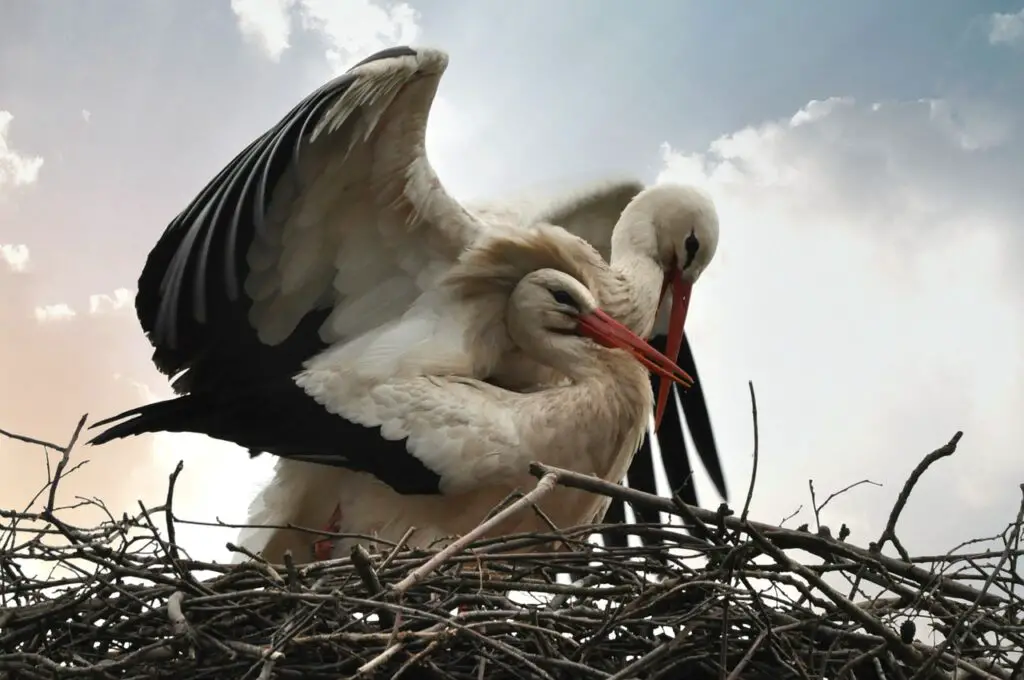
REASON V – Life History Strategies
Life history strategies play a crucial role in explaining why some animals mate quickly. Life history strategies refer to the suite of reproductive and survival traits that species have evolved to maximize their fitness in a specific environment. These strategies encompass various aspects of an organism’s life, including growth, reproduction, and mortality. Here’s how life history strategies relate to the rapid mating behavior observed in some animals:
- High Reproductive Rate: Some species, often referred to as “r-strategists,” have evolved to prioritize high reproductive rates. They produce numerous offspring quickly, but these offspring often face high mortality rates. In such species, rapid mating is an essential component of their life history strategy. By mating quickly and producing many offspring, they increase the chances that at least some of their offspring will survive to reproduce, ensuring the continuation of their genetic lineage.
- Short Life Expectancy: Species with shorter life expectancies tend to mate quickly. This is because their window of opportunity for reproduction is limited. By mating rapidly, they maximize their chances of reproducing before they die. This strategy is common in insects and other short-lived organisms.
- Unpredictable Environments: Species that inhabit unpredictable or unstable environments may adopt a “bet-hedging” strategy. They reproduce quickly and frequently in response to favorable conditions. Rapid mating allows them to take advantage of short-lived opportunities for reproduction when environmental conditions briefly become suitable.
- Low Parental Investment: In species where parental care is minimal or absent, individuals often invest less time and energy in each offspring. This allows them to allocate resources to producing more offspring quickly. Rapid mating aligns with this low parental investment strategy, as individuals do not invest much in the mating process itself.
- Predation Pressure: In environments with high predation pressure, animals may adopt rapid mating as a survival strategy. Prolonged courtship or mating rituals can make individuals more vulnerable to predators. Rapid mating minimizes the time spent in a vulnerable state, increasing their chances of survival.
- Resource Availability: Species in resource-limited environments may favor rapid mating to optimize resource allocation. Instead of expending energy on lengthy courtship or mate selection, they prioritize mating quickly to ensure reproductive success.
REASON VI – Preserving Genetic Diversity
Preserving genetic diversity is indeed one of the reasons why many animals engage in fast mating behaviors. This phenomenon can be explained within the context of evolutionary biology and reproductive strategies.
- Avoiding Inbreeding: One of the primary benefits of quick mating is the avoidance of inbreeding. Inbreeding, or the mating between closely related individuals, can result in the expression of recessive genetic disorders and reduced overall fitness in offspring. By mating quickly and with multiple partners, animals increase the chances of mating with individuals who are less closely related to them genetically, thereby reducing the risk of producing genetically compromised offspring.
- Promoting Heterozygosity: Genetic diversity within a population is crucial for its long-term survival and adaptation to changing environmental conditions. Quick mating with different partners promotes heterozygosity, which means that individuals have a diverse set of alleles (gene variants) at various loci in their genomes. This genetic diversity enhances the population’s ability to adapt to environmental challenges, as there is a greater likelihood of having individuals with advantageous genetic traits.
- Increasing Genetic Fitness: Quick mating allows for a greater number of potential mates, increasing the probability of selecting partners with desirable genetic traits. This can lead to offspring with improved genetic fitness, as individuals are more likely to mate with partners who possess advantageous traits such as disease resistance, foraging skills, or physical prowess. This, in turn, enhances the overall fitness of the population.
- Reducing Genetic Bottlenecks: Genetic diversity can act as a buffer against catastrophic events like disease outbreaks or environmental catastrophes. If a population has high genetic diversity due to quick mating with a variety of partners, it is more likely to have individuals with some level of resistance to the specific challenges posed by such events. This reduces the risk of population decline or extinction due to genetic bottlenecks.
- Adaptive Potential: Populations with greater genetic diversity have a higher potential for adaptation to changing ecological conditions. When environmental factors shift, individuals with diverse genetic backgrounds may have a better chance of possessing traits that are advantageous in the new environment, ensuring the survival and persistence of the species.
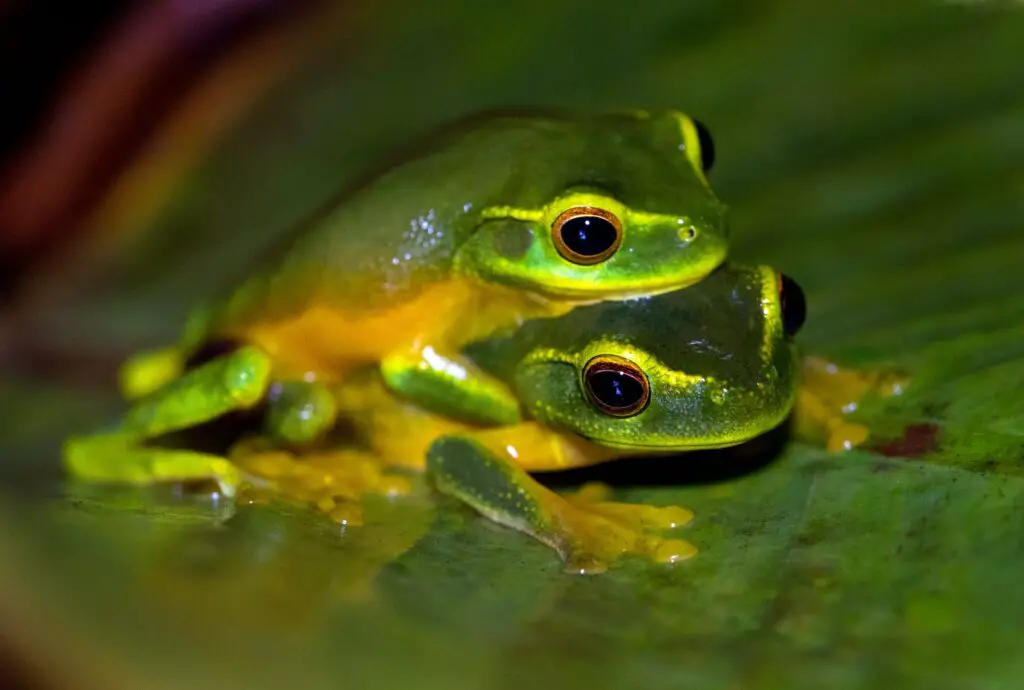
REASON VII – Maximizing Reproductive Opportunities
Maximizing reproductive opportunities is one of the fundamental reasons why many animals mate quickly. This strategy is rooted in the principle of seizing the chance to reproduce whenever it arises, and it offers several advantages:
- Unpredictable Environment: In nature, environmental conditions can be highly unpredictable. Food availability, weather patterns, and other factors can change rapidly. By mating quickly when a suitable mate is encountered, animals increase their chances of reproducing, even when conditions are favorable for only a short period. This adaptability is crucial for species’ survival in dynamic ecosystems.
- Short Breeding Seasons: Many species have limited breeding seasons, which may last only a few weeks or months. During these periods, individuals must find a mate and reproduce as efficiently as possible. Quick mating behaviors ensure that individuals do not miss their opportunity to reproduce during these brief windows of opportunity.
- High Mortality Rates: Survival in the wild can be precarious, with high mortality rates due to predation, disease, and other factors. Quick mating allows animals to pass on their genes before they may succumb to these risks, increasing the likelihood that their genetic legacy is preserved even if they don’t survive long after reproduction.
- Reduced Competition: By mating swiftly, animals can reduce the chances of other potential mates or competitors interfering with the mating process. This is especially important in species where there is intense competition for mates, as quick mating can help secure reproductive success before rivals can intervene.
- Limited Energy Resources: Energy is a valuable resource for animals, and excessive time spent on courtship and mating rituals can be energetically costly. Quick mating conserves energy, allowing individuals to allocate resources to other essential activities like foraging or maintaining their overall health.
- Multiple Opportunities: In some cases, animals may encounter multiple potential mates in a short period. Quick mating ensures that they can take advantage of these opportunities, potentially leading to multiple reproductive events and increasing their overall reproductive success.
- Genetic Diversity: Maximizing reproductive opportunities often involves mating with different partners. This can increase genetic diversity within a population, which can be advantageous for adapting to changing environmental conditions and resisting diseases.
REASON VIII – Reducing Exposure to Disease
The rapidity of animal mating, in some cases, can be attributed to the need to reduce exposure to disease. This aspect is particularly relevant in situations where prolonged mating behaviors or close physical contact during courtship can increase the risk of disease transmission among individuals. Below is a more detailed explanation of how quick mating helps reduce disease exposure:
- Minimizing Contact Time: Lengthy courtship rituals or prolonged mating behaviors can involve extended periods of physical contact between individuals. During this time, there is an increased opportunity for pathogens, such as bacteria or viruses, to be transmitted from one animal to another. Quick mating reduces the duration of contact, minimizing the window of opportunity for disease transmission.
- Reducing Stress and Weakening of Immune Systems: Extended courtship or mating rituals can be physically and emotionally taxing for animals. Prolonged stress or exhaustion can weaken an animal’s immune system, making it more susceptible to infections. Quick mating reduces the stress associated with prolonged courtship, helping individuals maintain robust immune responses.
- Maintaining Vigilance: Animals need to remain vigilant against potential predators, even during mating activities. Prolonged mating behaviors can divert their attention away from detecting and responding to threats. Quick mating allows individuals to quickly return to a state of alertness, reducing their vulnerability to predation and potential disease vectors (e.g., parasites carried by predators).
- Enhancing Reproductive Success: Quick mating behaviors can also serve to enhance reproductive success. In some cases, mating with multiple partners in a short time span (polygamous mating) can be advantageous. This strategy increases genetic diversity within offspring, potentially improving their resistance to diseases that may be present in the environment.
- Adaptation to Specific Environments: Different environments present varying disease risks. Species that have evolved in environments with a high prevalence of infectious diseases may have developed quick mating strategies as an adaptation to reduce the likelihood of disease transmission.
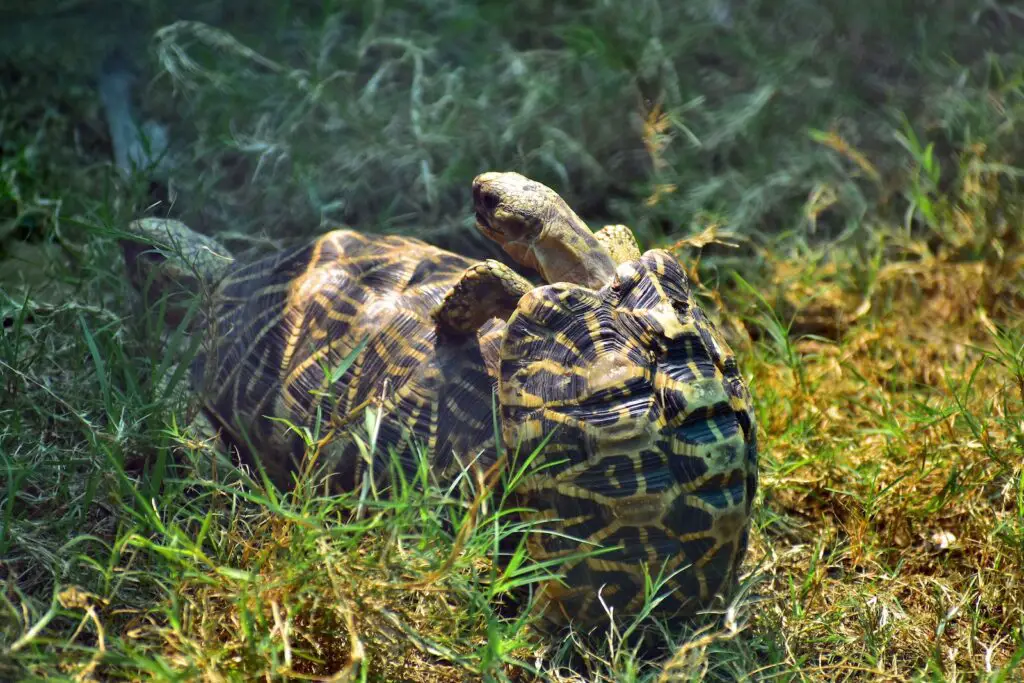
REASON IX – Ensuring Fertilization
Ensuring fertilization is a crucial factor driving the rapidity of animal mating behaviors. The primary reason for this is the concept of sperm competition and the need for individuals to maximize their chances of their genetic material successfully contributing to the next generation. Here’s a more detailed explanation of why animals mate quickly to ensure fertilization:
- Sperm Competition: In many species, multiple males may compete to fertilize the eggs of a single female. This creates a competitive environment where the sperm from different males are in direct competition to reach and fertilize the eggs. Quick mating by males is an adaptation to this competition.
- First-Male Advantage: In sperm competition scenarios, the first male to mate with a female has an advantage. Their sperm is more likely to reach the eggs first and achieve fertilization. Quick mating behaviors increase a male’s chances of being the first to mate with a receptive female, thereby maximizing the likelihood of fertilization.
- Sperm Storage: Some species have evolved mechanisms where females can store sperm from multiple males for extended periods. Quick mating helps ensure that a male’s sperm is the first to be stored in the female’s reproductive tract, increasing the chances that it will be used for fertilization when the female releases her eggs.
- Efficient Resource Allocation: Quick mating reduces the amount of time and energy spent on courting and mating rituals. This allows individuals to allocate their resources more efficiently, including producing more sperm. More sperm can be advantageous in sperm competition, as it increases the likelihood of outcompeting rival males.
- Minimizing Sperm Dilution: In species where females mate with multiple males in a short time frame, slower mating could result in sperm from different males mixing within the female’s reproductive tract. Quick mating minimizes the mixing of sperm, ensuring that a male’s genetic material remains relatively undiluted and has a better chance of fertilizing the eggs.
- Genetic Fitness: From an evolutionary perspective, individuals that are successful in ensuring their genetic material is passed on to the next generation have higher fitness. Quick mating is an adaptation that enhances an individual’s reproductive success and contributes to their genetic legacy.
REASON X – Optimizing Energy Expenditure
Optimizing energy expenditure is a crucial reason why many animals engage in fast mating behaviors. This concept is tied to the principle of minimizing the energy costs associated with reproduction while maximizing the chances of passing on one’s genes to the next generation. Here’s a more detailed explanation of why energy optimization drives animals to mate quickly:
- Conservation of Resources: Energy is a limited resource for animals, especially those that need to hunt for food or compete with other individuals for resources. Engaging in prolonged courtship or mating rituals can be energetically expensive. By mating quickly, animals save energy that can be allocated to other vital activities, such as searching for food or maintaining overall health.
- Survival and Reproduction Trade-Off: Animals face a trade-off between investing energy in survival and investing it in reproduction. Energy spent on mating behaviors is energy that cannot be used for activities like escaping predators, building nests, or caring for offspring. Rapid mating allows animals to strike a balance between reproduction and survival, ensuring they have the energy reserves needed to stay alive and reproduce in the future.
- Opportunistic Reproduction: Some animals inhabit environments where mating opportunities can be sporadic or unpredictable. In such cases, waiting for extended periods to find a mate or engage in lengthy courtship rituals may result in missed reproductive chances. Rapid mating allows individuals to capitalize on these infrequent opportunities, increasing their overall reproductive success.
- Minimizing Exposure to Predators: Prolonged courtship or mating behaviors can make animals more conspicuous to predators. By mating quickly, animals reduce the time spent in a vulnerable position, minimizing the risk of being attacked or eaten by predators. This aligns with the principle of conserving energy for survival.
- Efficient Resource Allocation: Animals need to allocate energy not only for mating but also for various other life processes, including growth, maintenance, and immune system function. Quick mating helps ensure that a significant portion of an individual’s energy budget remains available for these essential functions, contributing to overall health and fitness.
- Reproductive Frequency: In species where individuals can reproduce multiple times within a single breeding season or year, quick mating allows them to engage in multiple reproductive events, thereby increasing their total reproductive output. This strategy is particularly advantageous in environments with abundant resources.
